| |
|
DRIPTORCH DIGEST
A Newsletter for the Southern Prescribed Fire Community
|
|
Welcome to the Driptorch Digest,
an online newsletter for the Southern prescribed fire community.
Please feel free to forward this newsletter to others who might be interested, and encourage them to sign up for their own subscription by clicking on the "subscribe" link at the bottom of this newsletter, or by subscribing to the
|
Happy Holidays from the Driptorch Digest!
As the year wraps up, we want to thank all of our readers for your interest in and dedication to prescribed fire. We look forward to continuing to share all of your stories and events with the fire community in 2018! We wish everyone a wonderful holiday season, and a very happy New Year!
No one can appreciate a Yule Log like a Driptorch Digest reader.
Here's a nice little project for your own enjoyment or as a home-made gift item. Looks cool in the fire pit, as a centerpiece and is even a kid-friendly project (as long as they are not pyromaniacs).
Click here and have fun!
My own added suggestion: cinnamon sticks tied on with natural jute twine.
|

Thank You, Luther!
We would like to give a big thank you to Luther Jones for all of his hard work and dedication to the prescribed fire community during his career as the Longleaf Pine Initiative Coordinator with the Natural Resources Conservation Service. We are also thankful for his active membership in SERPPAS. Luther will be retiring at the end of the year, but his efforts will leave a legacy long into the future.
Congratulations to Luther!
|
Spotlight: Southeast Cohesive Fire Management Strategy Success Story
|
|
 |
| Red-cockaded woodpecker . Photo credit: US Fish and Wildlife Service |
 |
Piedmont National Wildlife Refuge Manages RCW Habitat with Prescribed Fire
Written by: Holly Campbell, Southern Regional Extension Forestry, and Carl Schmidt, Piedmont National Wildlife Refuge
Piedmont National Wildlife Refuge (NWR), located on 35,000 acres in central Georgia, was established in 1939 as a refuge and breeding ground for birds and other wildlife. An initial goal of the Piedmont NWR was demonstrating that wildlife and habitat could be restored on highly eroded and disturbed landscapes using good forest management practices. Once nearly devoid of forests and wildlife, over 75 years later the Piedmont NWR is entirely reforested and hosts abundant wildlife, including waterways for migrating birds, productive wetland areas from beaver ponds, and opportunities for hunting. Mammals, birds, and even butterflies are all abundant at the Piedmont NWR.
Click here to read the full article.
|
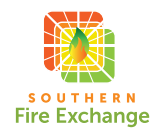 New Fire Science You Can Use New Fire Science You Can Use
Depending on where you live in the South, you might be interested in following the work of either or both the Southern Fire Exchange (SFE) and the Consortium of Fire Managers & Scientists (CAFMS).
Written by David Godwin, Southern Fire Exchange
Fire Weather Intelligence Portal
The "Fire Weather Intelligence Portal" (http://climate.ncsu.edu/fwip/) is a free open website providing valuable weather and climate information for prescribed fire and wildland fire managers. The Fire Weather Intelligence Portal, a web-based monitoring tool, was created by the NC State Climate Office and the NC Forest Service to show past, current, and forecast weather and fire risk information across North Carolina. With support from the Southeast Regional Climate Hub, the Portal has recently been expanded to cover 13 southern states to provide guidance for wildland fire managers across the Southeast. The Portal has updated its informational packages of critical fire weather and fire danger information through which daily burning and smoke dispersion conditions can be assessed. A new SFE webinar demonstrates use of the portal at: https://youtu.be/XfBNbmNF7H0
New SFE Fact Sheet: Planning for Habitat: The Importance of Assessing Functional Groups in Longleaf Pine Understories. Longleaf pine savannas can harbor a diverse array of plant functional groups, including mast-producing shrubs, legumes, warm- and cool-season grasses, and wildflowers. All of these functional groups contain plants that can be essential components of wildlife habitat and food web functioning. Recent research has shown that the plant functional group richness can vary significantly among longleaf pine ecosystem restoration sites that otherwise might be considered similar. This fact sheet may help the reader to better plan restoration and burn prescriptions in longleaf habitats.
Fuel Treatments in Pine Flatwoods: A Photo Series Guide
Are you working on mechanical treatments or prescribed fire projects in pine flatwoods? This JFSP funded and SFE produced full color guidebook can help you quickly and easily estimate fuel loads by size-class and time since treatment.
We Need Your Stories
Friends of the Southern Fire Exchange, we need your help. We need stories about how you've used, shared or applied information from the Southern Fire Exchange in your work, management programs, on your property, or in your classroom. Funding for the Joint Fire Science Program, the organization that provides the grants under which all of the Fire Science Exchanges operate, has been cut by over half in the proposed federal budget. While there seems to be a general consensus that the Fire Science Exchanges are valuable programs for connecting managers, scientists and the public with relevant fire science information, specific success stories can be invaluable for communicating the impacts of our programs. Share your story here.
|
Prescribed Fire Council Updates

PFC Fire Circle Discussion at AFE Congress
There will be a Fire Circle discussion on Prescribed Fire Councils at the upcoming
on November 28th from 1:40-3:40pm. If you will be attending the Congress, be sure to join in the discussion!
Annual Meetings
Many Prescribed Fire Councils have recently held their annual meetings. Check
on your state's website to find an event near you.
|
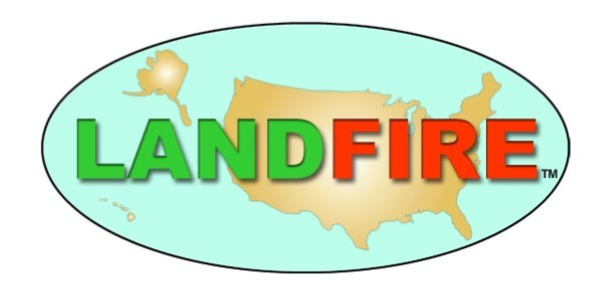
New Tools and Applications
By: Jeannie Patton, Communications Lead, The Nature Conservancy -
LANDFIRE (Landscape Fire and Resource Management Planning Tools) is an innovative program designed to create and periodically update comprehensive vegetation, fire and fuel characteristics data using a consistent process for the U.S. including Alaska and Hawaii. LF developed quantitative vegetation models and comprehensive ecological descriptions for all major vegetation systems in the U.S. (
Biophysical Settings, or BpS), and GIS tools that help landscape and resource managers make the most of these powerful products. The suite of spatial data and
vegetation models is free and accessible online.
Products are ready for use almost immediately. Data and models are adaptable to
fire and non-fire applications.
Experts developed products using consistent methods across the country. Models & descriptions are
complete for the entire U.S., regardless of ownership or boundaries. Data are updated on a
regular schedule to reflect spatial layers that change over time.
Easy access: The Nature Conservancy's LANDFIRE team has developed an "introduction" to the program and products, complete with application stories, videos, interviews, and latest news. Click on LANDFIRE's Conservation Gateway site for a non-techy, highly informative, up-to-the-minute resource.
Latest
LANDFIRE Postcard includes information about MoD-FIS products, LF's Helpdesk Q & A, an interview with Megan Sebasky, Remap update, and links to LF-related climate articles.
Opt in to receive postcards that are delivered monthly via email to your inbox.
Are you receiving LANDFIRE Bulletins and Postcards directly? We post monthly: news, application stories, interviews. Click here to learn more and to subscribe.
|
The Science of Fuel Treatments: S
tudies Show Reduced Rates of Fire Intensity and Other Benefits
A new report from the Joint Fire Science Program (JFSP), evaluates land managers' use of various methods to reduce fuel levels. According to the report, the two most common fuel treatment methods include forest thinning and prescribed fire. Scientific studies of fuel treatments supported by the Joint Fire Science Program (JFSP) highlight significant findings on the effectiveness of these treatments in various fuel types. The report also outlines key questions for future studies. A colorful and informative fact sheet is available for download/printing.
Weather, fuels, fire behavior, plumes, and smoke - The nexus of fire meteorology
Our scientific understanding of wildland fire-atmosphere interactions has evolved: from simple correlations supporting the notion that hot, dry, and windy conditions lead to more intense fires, we have moved towards more mechanistic and physical descriptions of governing processes such as fuel moisture dynamics, wind-driven fire spread, the influence of vortices, and plume dynamics. Our advances are important not only for the sake of scientific knowledge but also for the sake of transferring new knowledge into applications for decision making.
Read the full article from
Fire Management Today.
|
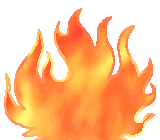
Prescribed Burn Association Updates
PBA Special Session at AFE Congress
There will be a special session on PBAs at the upcoming
Association for Fire Ecology Congress
in November. If you will be attending the Congress, be sure to attend this session!
Prescribed Burn Alliance of Texas
A Prescribed Fire Portal contains many resources and links to all eleven prescribed burn associations located in Texas. Key contact information, maps and websites are included as well.
|
The Season of Past Fires:
Insights from a Study of Tree-growth Patterns
Research by Tall Timbers Research Station & Land Conservancy
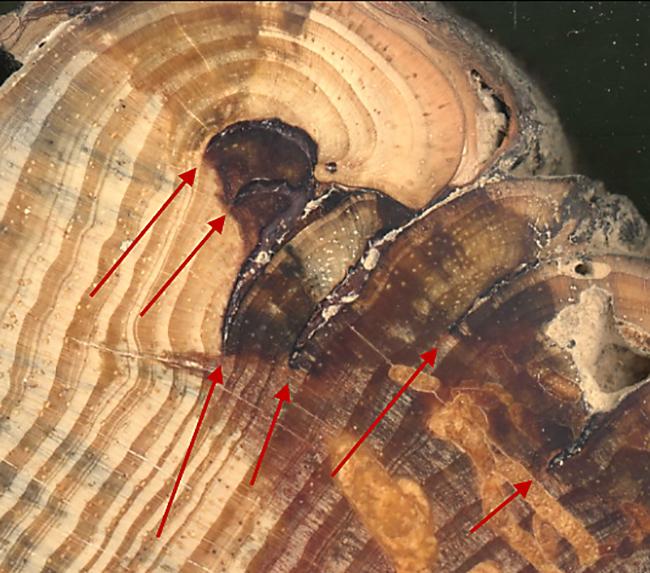
The Tall Timbers Fire Ecology Program and its Southeastern Coastal Plain Tree-Ring Laboratory are completing a long-term study of tree-growth patterns for pines monitored in Florida and southern Georgia. The study will allow researchers to better assess the seasonality of past fires using fire scars in annual growth rings. The first goal of the study was to determine the seasonal timing of diameter growth. Metal bands called dendrometer bands were placed around the tree trunks to determine when trees were growing (as opposed to dormant), each year. The results of the study will help address the ongoing controversy over the season of past fires, including the relative importance of lightning versus Native Americans in igniting fires prior to American settlement by Europeans.
Read the full article here.
|
Communicating Amidst Controversy:
The Fire Learning Trail
In 2011, the Pisgah National Forest proposed a series of controlled burns in Linville Gorge, a Wilderness Area in great need of restoration work after almost a century of fire suppression. The project was collaboratively developed through the Southern Blue Ridge Fire Learning Network. Coincidently, Linville Gorge is also one of the most popular recreation sites in the region, offering vast rock climbing, hiking and backpacking opportunities. The proposal was met with strong backlash from the local community; in fact, an online petition was signed by more than 1,500 people. Members of the Consortium of Appalachian Fire Managers & Scientists (CAFMS) developed a winning approach to communicating with the concerned public. The way forward turned out to be the Fire Learning Trail. Read more here.
|
Wildland Fire and Military Lands Sustainability
Distance Education Masters with Prescribed Fire Component 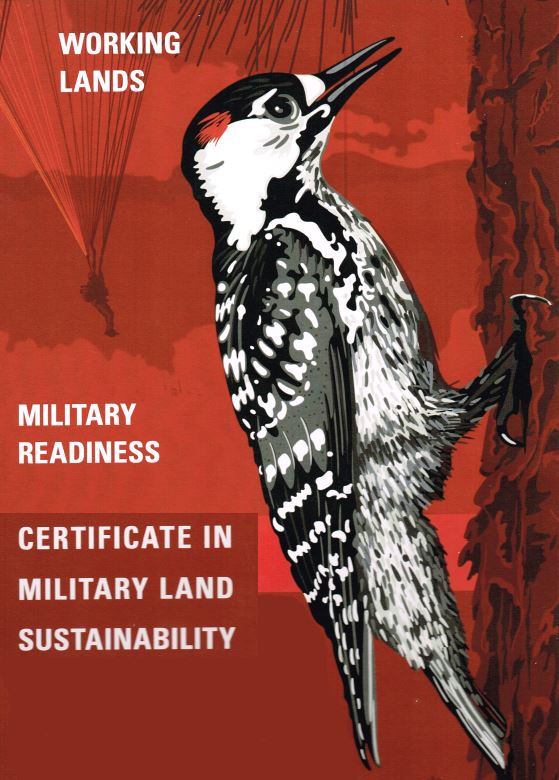
Want to stand out to those hiring for natural resource positions within the bases or for agencies or firms that engage the military in natural resource management? The Graduate Certificate in Military Land Sustainability provides students and professionals the opportunity to develop recognized academic credentials and the advanced expertise required to work for military bases and associated lands sustainability projects.
Read more here.
US Department of Defense Sponsored Research Opportunity - deadline January 4, 2018 by 2 p.m. ET.
The objective of this Statement of Need (SON) is to improve understanding of ignition patterns, self-organization of convective structures, and near-fire smoke plume development for the purpose of improving management of fire for military land-use. Please contact Kurt Preston
at
[email protected]
. To download a copy of the full RFP,
please click here
.
|
Mapping Prescribed Fire Occurrence in Florida

Results of a workshop organized by Tall Timbers, Florida Fish and Wildlife Conservation Commission, and Peninsular Florida LCC.
Joe Noble, GIS/Information Technology Program Director, reported in the Fall issue of Tall Timbers eNews that developm
ent of a comprehensive spatially explicit map of fire occurrence remains one of the most critical needs for conservation in Florida and the Southeastern U.S. The article states, 'Not only are the vast majority of Florida's endangered species and ecosystems reliant on frequent fire, but fire risk analysis, prescribed fire planning, and fire behavior modeling are sensitive to fire history.' Workshop participants proposed the creation of a robust spatial database containing precise mapping and tracking of all prescribed fire in Florida.
Read the full article here.
.
|
Please log your burns!

Th
e Oklahoma Prescribed Burn Association (OPBA)
collects prescribed burn data beyond Oklahoma.
An
online form is available
to log prescribed burns and it does not need names or exact locations. It is for anyone that burns
in any state: private, state and federal. As of early May, there were 211 burns en
ter
ed for 2017 from nine states.
For more information about the organization and the online form contact
John Weir, President of the Board of Directors of OPBA, [email protected].
|
|
The Association of Fire Ecology offers World of Wildland Fire
videos. These excellent videos cover topics like wildfire ecology, latest research, fire behavior and fuels, moisture, and combustion.
December 13, 2017 -
10:00 -11:30 AM Eastern. Prescribed Fire 101 for Air Quality Specialists
Join Dr. Alan Long, Southern Fire Exchange for this webinar which will provide an introduction to prescribed fire for air quality and air resource specialists as well as other non-fire professionals. Knowledge of prescribed fire planning, applications and tools can help air quality specialists to improve their communication and efficacy when interacting with the prescribed fire community.
Click here to register.
December 11, 2017 -
1:00 PM Eastern. Climate, Megafires, and Conservation Financing. Join in the discussion on how climatic changes can influence wildland fire activity across the globe and how these critical fire weather variables have changed over the last 40 years.
Click here for more information and how to join the webinar. *** Please join the session 15 minutes prior to the start of the webinar. ***
December 13, 2017 -
12:00 PM Eastern. NAFSE Webinar - Connecting fire behavior, regime, and effects. Dr. Michael Gallagher will explore studies of fire behavior, fire effects, and seasonality to show how burn severity data can be used to better understand the qualitative variety of fire and how observed patterns can be used to hone management strategy.
Click here to register.
More fire-related webinars are archived on the Southern Fire Exchange website at:
|
Upcoming Events, Training, and Networking
Prescribed Burn Certification Courses
December 5, 201
7 -
Certified
Prescribed Fire Manager training.
The one-day course teaches managers how to plan prescribed burns that comply with South Carolina Smoke Management Guidelines.
Get full details here and register to participate.
December 5-6, 2017 - Prescribed Burn Certification Class in Waycross, GA.
Sponsored by Georgia Forestry Commission.
Click here for details and to register
May 8-10, 2018 - Prescribed Fire Training, Woodworth Outdoor Education Center.
NC Forest Service Prescribed Burner Training Dates for Spring 2018
January 23rd and 24th, 2018: Fayetteville Agricultural Center in Cumberland County
February 15th and 16th, 2018: Scotland County Cooperative Extension Services in Laurinburg
You can register for the January class at this link.
Southern Fire Exchange has a useful Education and Training web page at:
Fire Fests
January 27, 2018 - Red Hills Fire Festival, Tall Timbers, Tallahassee, FL. For More Information Contact: Brian Wiebler, 850-893-4153, ext. 345 or email,
[email protected]
Jan.14-Feb. 9, 2018.
Wildlife Firefighter Apprenticeship Program
. The Wildland Firefighter Apprentice Program is an accredited, educational program designed to enhance and develop future Fire and Aviation Managers. The intent of the Program is to take a career entry firefighter and provide education, training and paid work experience over a 12 to 48 month period, depending on experience. Upon successful completion of all the requirements of the Apprenticeship Program, the apprentice will reach journey-level status as a wildland firefighter.
Firefighter II Certification. This intermediate firefighter training program (equivalent to NWCG S-131, S-133, and S-231 courses, as well as the G-131 course) is designed to prepare the Firefighter 2 (FFT2) to move to the Firefighter 1 (FFT1) position. This course trains these firefighters to coordinate with other resources and be good leaders - make sound tactical decisions while keeping safety their first priority.
Conferences and Workshops
hundreds of the most influential people in wildland firefighting, forestry, land use and community planning all in one place. The educational sessions, hands-on exercises, and exhibit floor all offer numerous opportunities to share ideas and connect with other industry colleagues.
March 26-29, 2018 - National Cohesive Wildland Fire Management Strategy Workshop, Peppermill Resort, Reno, NV. "Making a Difference - Building Capacity, Improving Preparedness, and Learning form Experience." Call for workshop or presentation proposals, deadline extended to December 4, 2017. This conference is hosted by the International Association of Wldland Fire, in partnership with Wildland Fire Leadership Council and the Western, Southeastern and Northeastern Regional Strategic Committees.
 |
|
 |
Click Me! |
May 21-24, 2018 - The Fire Continuum Conference, University of Montana, Missoula, MT.
Call for Workshop
Proposals,
deadline extended to December 8, 2017.
Click the expandable image to the right for more details.
Save the Date
Oct. 24-26, 2018 - The Longleaf Alliance, Alexandria, LA. The 22nd biennial Longleaf Alliance regional conference is scheduled to take place at the Holiday Inn Conference Center in Alexandria, LA., October 24 through 26, 2018. Visit longleafalliance.org for more details.
Visit the Southern Fire Exchange for listings of conferences, webinars, workshops and field tours at:
|
Job Postings
Prescribed Fire Corps Project Leader
with Student Conservation Association (SCA) in partnership with The Nature Conservancy, seeks qualified applicants to lead, educate, and inspire young adults for the Prescribed Fire Corps programs in the southeast U.S., January - May 2018. See the job description for full detail and how to apply.
Wildland Restoration International (WRI) Job Announcements:
See the job descriptions for positions in Florida and Southeastern US. WRI also has a subscription option that will notify you by email of job announcements and training opportunities.
The Nature Conservancy
has numerous fire-related positions open. For details, visit the
careers page
and search "prescribed fire."
Online Job Boards:
|

Driptorch Digest
This newsletter is hosted by the Southeast Regional Partnership for Planning & Sustainability (SERPPAS) Prescribed Fire Work Group.
Share your prescribed fire
information, stories, and events!
Jennifer Fawcett
SERPPAS Prescribed Fire Work Group Coordinator
NC State University, Extension Forestry
 |
|
 |
EXTENSION FORESTRY
|
Campus Box 8008
Raleigh, NC 27695-8008
919-515-8288
Kelley Duffield McCarter - Production Assistant
NC State University, College of Natural Resources
Department of Forestry and Environmental Resources
Campus Box 8008
Raleigh, NC 27695-8008
919-515-9563
|
|
|
|
| |
|